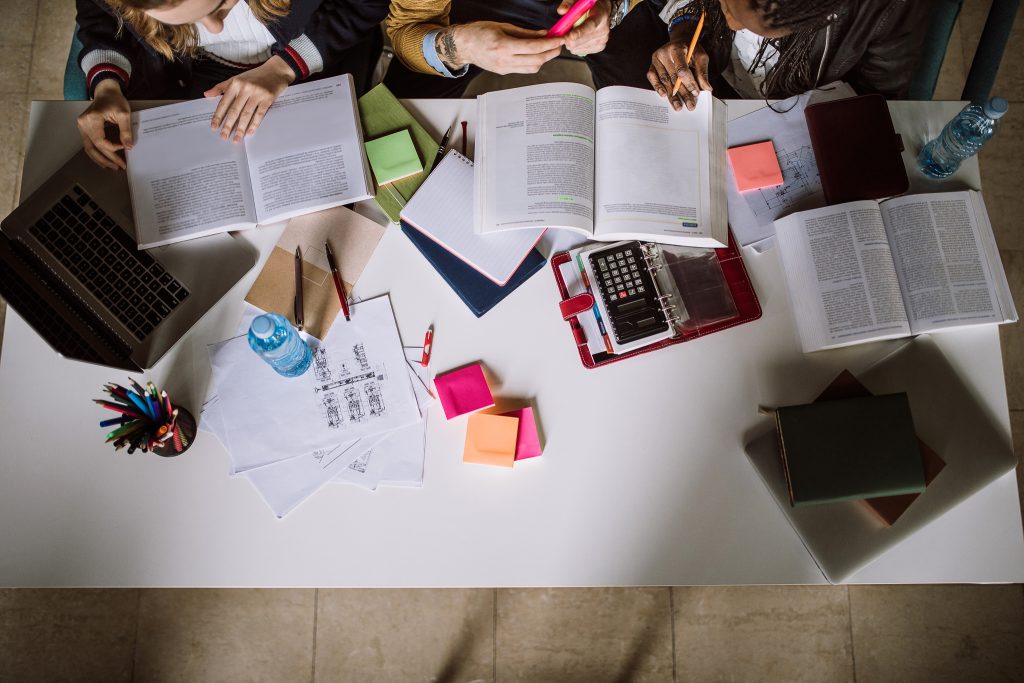The mindful learner…
“Be where you are, otherwise you will miss your life.” – Buddha
How present are you?
Distraction is an inherent part of student life. Apart from thoughts and worries about the next test or assignment due date, paying the rent etc., being constantly plugged in, social media, multi-tasking interfere with our ability to alert ourselves to important information and direct and maintain our attention on that information.

Activity 3 asks you to reflect on your present-time awareness and how present you are in your day-to-day experiences. Research shows that persons who engage in practices that build mindful qualities have greater levels of present-time awareness. Zen meditation practitioners, for example, score higher on average than individuals who do not practice mindful awareness. Mindful awareness among Zen practitioners correlated with the number of years they had been practicing. In the same study, mindful awareness was also associated with greater well-being.1
Complete [ ACTIVITY 3].

Reflect on your responses. Are there particular times and places that you are more or less present? We will check in again later in the module to see whether your focus has changed over time.
Where does your mind take you?
Mindful qualities extend beyond being aware of present-time experience to how you are experiencing your thoughts, feelings and actions. Activity 3 asked you to consider scenarios relating to social and learning situations and how you would respond in your thoughts, feelings and actions.

It’s quite normal for us to react in ways that are emotion-filled and cause us to behave in ways that don’t really work for us. In the social situation, perhaps you responded by thinking “What did I do to make them upset?”. Perhaps you felt anxious, or maybe angry that a friend would walk right by without acknowledging you. Perhaps you responded by returning the snub or anxiously texting to see what’s wrong.
In the performance situation, perhaps you responded by feeling sad and disappointed with yourself; by thinking “I am such a phony. Why should I bother?” As a consequence, you may have avoided future work as it made you anxious that you would fail.
As a mindful learner, we want to learn ways that we can skillfully respond to these situations rather than react automatically in ways that might not work very well for us.
Qualities of the mindful learner
The mindful learner has three qualities essential to self-regulated learning. The mindful learner is able to:
- Maintain awareness in the present moment;
- Know their thoughts and feelings relating to learning; and
- Not be overpowered by emotions or thoughts in directing their actions.
Having mindful skills allows you to “unhook” from unpleasant thoughts (e.g., “I can’t do this”) and feelings (e.g., fear, anxiety, boredom) that would otherwise cause to avoid and/or distract yourself from certain activities, (e.g., writing a paper). While mindfulness activities are not designed to reduce stress, students participating in such programs have reported reductions in distress during exam periods.
Developing mindful qualities
Mindful qualities are skills built through practice. You will start by doing simple activities to develop mindful awareness and practice these skills in different situations. Research shows that these activities can improve attention and energy, even after being practiced for a short time (i.e., 5 days).

The following activities are taken from the Frantic World website. Frantic World has information and resources to help build mindful awareness that can be found here.
Mindfulness of the body and breath
The first mindfulness practice will get you to practice drawing your attention to your own breath and holding your attention while you allow thoughts and feelings to enter and leave your mind.
This exercise is a great place to start with mindfulness and takes about 8 minutes to complete.
Mindfulness of Body and Breath Meditation (begin meditation here).
Transcript (.pdf, 115 KB).
Practice this exercise for the next 5 days. Also, take time to notice how present you are in your daily activities (see Mindfulness in Everyday Life below). After some practice with this exercise, you may wish to explore more mindfulness exercises. Links to progressions on this exercise from Frantic World are provided below.
Body Scan Meditation (begin meditation here)- This is often the foundation of meditation. Here, we develop the essential skill of opening up to our experience as it is unfolding, right now.
Transcript (.pdf, 96 KB).
Three Minute Breathing Space (begin meditation here) – This is a short exercise that you can use at any time during the day. Practice this exercise, especially when you don’t need it (i.e., when you aren’t stressed) to develop your present time awareness.
Transcript (.pdf, 84 KB).
Sounds and Thoughts Meditation (begin meditation here)- This is a good follow-up to the Body and Breath Meditation. It helps you develop awareness around how you receive internal thoughts and external sounds.
Transcript (.pdf, 87 KB).
The Befriending Meditation (begin meditation here) – This meditation introduces and develops the important quality of self-compassion or caring for yourself. With all of the ups and downs of school and relationships, this is particularly relevant to student life.
Transcript (.pdf, 87 KB).
Mindfulness in everyday life
Being mindful is not just about sitting on a cushion and breathing. You can incorporate mindfulness into many of your daily life activities. Over the week try the following, once per day:
Mindful eating – When eating your next meal, take the time to notice the feel of the utensil, your movements while eating and of course the taste and texture of the food you are eating. Single out every bite and chew, paying attention to each of the activities involved in eating.

Mindfully brushing your teeth – Take the time to notice grasping your toothbrush and toothpaste. Notice squeezing the toothpaste onto the brush, turning the tap to run the water, the movements of brushing and sensation of the toothbrush in your mouth.
Mindfully showering – To mindfully experience showering, notice turning and adjusting the taps, stepping into the shower, the feel of the wet shower floor, the sensation of the water striking your skin, the feeling of soap lather and shampoo and the feel of the towel drying your skin after, remarking on the fresh feeling you get.
Mindful relating – The next time you are chatting with your friends or family members, take the time to really notice what they are saying, while noticing your tendency to think of your reply or to interrupt.

Other activities can also be done mindfully. For example, putting on and tying your shoes, waiting in line at the grocery store or simply waking up and taking a mindful breath before preparing yourself for the day can help build your awareness.

Now that you have an idea of what mindfulness can bring to your learning experience, let’s move on to talk about another quality of the mind – the growth mindset.
REFERENCES
- Brown, K.W. & Ryan, R.M. The benefits of being present: Mindfulness and its role in psychological well-being. Journal of Personality and Social Psychology, 2003, 84, 822–848.
A mindful learner has three qualities essential for self-regulated learning. They (1) maintain awareness in the present moment, (2) know their thoughts and feelings regarding their learning, and (3) are not overpowered by their thoughts or emotions in directing actions. Mindful learners are able to detach themselves from unpleasant thoughts and feelings that would otherwise distract them from their learning.
Present-time awareness involves letting go of all of the distractions that are an inherent part of life and instead focusing on what is happening in the present. To be aware of the present one must push away incoming thoughts about future worries or tasks and instead focus only on what is happening in the present. To develop this awareness you will practice mindful qualities throughout the module.
Mindful qualities involves experiencing present-time awareness of thoughts, feelings and accepting these thoughts and feelings as natural products of your mind. By developing these skills you can loosen the control that thoughts and feelings have over your behaviour and better focus on your learning goals or the task at hand.
Self-regulated learning can be achieved through the SRL cycle. The SRL cycle allows you to take strategic control of how you approach your goals and be prepared and willing to face any challenges and seize any opportunities that might arise as you work to make your goals your reality. SRL is achieved in three phases: reflect, plan, and act. Ideally, you should repeat this cycle multiple times as you create goals and tackle challenges.
The ability to be aware of present-time and remain aware throughout your day-to-day experiences. Mindfulness is the ability to resist distraction and temptations, and to remain present and focused on the task at hand. This skill also allows you to control your emotions and respond in a skillful way to emotionally challenging situations, rather than react automatically without careful thinking or emotional control. The skills needed for mindfulness are developed through practice. You must start with simple activities to develop mindful awareness in a variety of situations. Meditation is a common activity to practice awareness and to focus on the present.
The mindfulness of body and breath meditation is designed to settle and ground you in the present moment. Using this meditation, you can take the time to notice how present you are in daily activities and strive to achieve more awareness in your everyday life.
Often thought of as the foundation of meditation, this technique allows us to open up to our experiences as they are happening. A body scan meditation allows us to be in the present and is an essential technique for mindfulness.
This short exercise can be used at any time during the day. Feel free to complete this exercise whenever it works best for you and your schedule. We suggest practicing this technique even when you don't need it (e.g., even when you're not stressed) to develop present time awareness.
This meditation helps to develop awareness around how you receive internal thoughts and external sounds. This meditation is often a good follow up to the Body and Breathe meditation.
The befriending meditation introduces and develops self-compassion and the importance of caring for yourself and others. Through this meditation, you will take the time to show yourself kindness as well as compassion for those around you.
The belief that your basic abilities can be developed and cultivated through hard work and dedication. Someone with a growth mindset views their basic skills and talents as a starting point, therefore creating a love of learning and resilience that is essential for great accomplishment. Great learners are made, not born.

